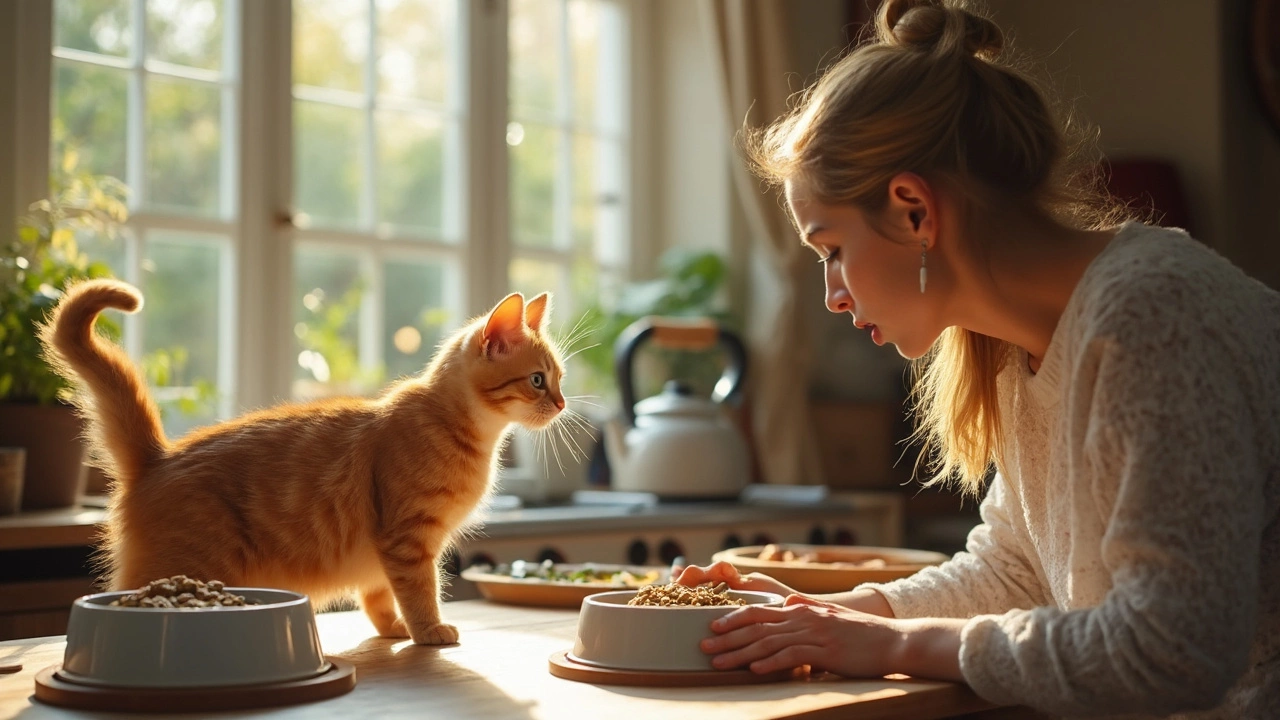Feeding Schedule Basics: When & How to Feed Your Dog or Cat
Getting the right feeding schedule down is one of the easiest ways to keep your pet healthy and happy. It isn’t just about pouring food into a bowl – the timing, portion size, and consistency all play a part in digestion, energy levels, and even behavior.
Most owners wonder whether they should feed once a day, twice, or spread meals across several small portions. The answer depends on your pet’s age, size, and activity level. Puppies and kittens need more frequent meals because their growing bodies burn fuel fast. Adult dogs and cats usually do fine with two meals a day, but active breeds or senior pets may benefit from slight tweaks.
Setting a Simple Dog Feeding Routine
Start by picking two anchor times that fit your daily schedule – think breakfast and dinner. A common combo is 7 am and 6 pm. This gives a clear 11‑hour gap, allowing the stomach to empty and the pet to rest between meals. If your dog is a heavy chewer or has a sensitive stomach, you can add a light snack mid‑day, but keep it low‑calorie.
Measure the food according to the brand’s guideline and your vet’s advice. Adjust the portion if your dog is gaining or losing weight. Consistency is key – feed at the same times every day, and keep the feeding spot calm and distraction‑free.
Cat Feeding Schedule Tips
Cats are natural grazers. Many prefer small portions throughout the day, especially indoor cats that don’t hunt. If you’re feeding dry kibble, you can leave a measured amount out for free‑feeding, but watch for overeating. For wet food, aim for two meals – morning and evening – to keep the moisture intake high.
When you switch from dry to wet, start by offering a smaller wet portion alongside the dry. Observe whether your cat finishes the wet food; if not, reduce the amount next time. This avoids waste and keeps your cat’s calorie count accurate.
Nighttime feeding can be a concern for dogs. Most vets recommend finishing the last meal at least a couple of hours before bedtime. This helps prevent indigestion and reduces the chance of a late‑night bathroom break. If your dog still seems hungry at night, consider a low‑calorie chew toy or a small portion of plain, boiled chicken.
Remember, every pet is unique. If your cat or dog shows signs of over‑ or under‑eating, tweak the schedule a bit. You’ll quickly spot patterns – a dog that gets restless after a meal might need a longer interval, while a cat that hunts at night may benefit from a slightly larger evening portion.
In short, pick two reliable times, stick to them, and adjust portions based on weight and activity. Keep the feeding area quiet, and watch how your pet reacts. With a steady feeding schedule, you’ll notice steadier energy, better digestion, and fewer bathroom accidents. Your pet will thank you with wagging tails or content purrs – and you’ll have one less thing to worry about each day.
Posted By Bryndle Redding On 13 May 2025 Comments (0)
How Many Times a Day Should You Feed a Cat? Practical Tips for Happy, Healthy Meals
Not sure how many times a day your cat should eat? This guide explains feeding schedules based on your cat’s age, lifestyle, and needs. Find out what works best for kittens, adults, and senior cats. Discover how feeding routines affect health and behavior. Learn practical tips for making mealtimes easier—and happier—for both you and your cat.
READ MORE